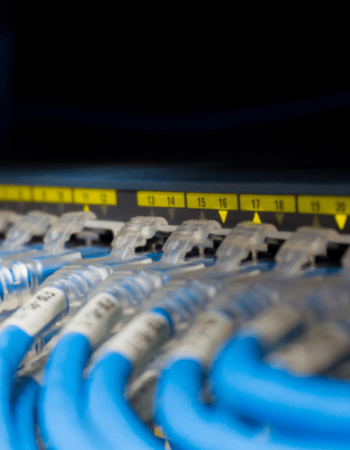Setting up network cabling in a new construction building requires careful planning and execution. With the latest technology, having a strong and adaptable network infrastructure is critical for the smooth operation of any modern structure. To ensure smooth operation and efficient setup.
When it comes to network cabling in new construction buildings, the choices you will make now will shape the connectivity of buildings for years to come.
Let’s dive into six innovative ways for network cabling installation in new construction, ensuring a smooth flow of data and communication in every corner.
Introduction to Network Cabling Installation
Network cables are used to interconnect, connect, and transfer data as well as information between computers, routers, switches, and storage areas networks. These cables play a vital role in carrying and media through which data flows. There are several types of network cable available in the market, that individuals choose according to their operations and requirements. The most common are twisted pair cables used in offices, retail stores as well as commercial sites.
Network cabling installation acts as a backbone of the modern marketplace by supporting data transmission, communication as well as multimedia streaming in the whole building. Moreover, an internet connection through wifi makes a smart building because of the cabling solution. We can say that it connects threads that weave together the fabric of modern living and working space.
1. Identify Requirements and Plan Cable Routes
Before the first brick is laid, the first step in installation is knowing the specific needs of your network. It includes the number of connections, bandwidth requirements, and location of network equipment. It is the foundation upon which your network’s success will be built. Move and act strategically with a plan like a chess player.
Remember, it is essential to carefully plan for the network cables that take the structure and design of the new building into account. However, plan for equipment placement and think about acting according to any future expansion considerations. The cable may need to travel through walls, ceilings, or floors, so plan for cable conduits and trays to protect and route them.
2. Select the Appropriate Cables
Selection of the right cables according to your network requirements is essential for structured cabling solutions for your building. Generally, Category 6 cables are made for high-speed ethernet networks. However, if you expect the need for higher bandwidth or longer distances, fiber optic cables can be a better choice for you.
On the other hand, Cat6A offers the ability to handle lightning-fast data speeds and support the latest technologies.
Protect your cables with shining armor, this strong shield protects cabling infrastructure from physical damage. Additionally, it defends electromagnetic interference and ensures signal quality.
3. Install Cable Pathways and Network Requirements
At the time of network cabling installation, ensure the use of cable trays, conduits, or raceways to build dedicated pathways for the cables. This will safeguard the cable infrastructure from damage and also keep them organized. However, following building codes and other general rules and regulations according to specific areas is necessary.
It is crucial that you identify the optimal location for network equipment such as switches, routers, and patch panels. It is generally best to have a central location to reduce cable length and make maintenance easier. Additionally, proper planning will also lower the whole budget of network cabling installation.
4. Terminate Cables
Terminate the cables at both ends using appropriate connectors and patch panels. Ensure proper labeling of each cable for easy identification later. Remember, in the battle against signal interference separation is the key to prevention from electromagnetic interference.
Choose multiple pathways of cables or keep a safe distance to ensure harmony between data and power.
On all jobs, Porter Tech provides certification or actual bandwidth tests of the newly installed cables. Professionals at the company ensure that your new castle has secure and effective connectivity according to your requirements.
5. Test and Certify the Cabling
After setting up the installation, don’t get too excited, put your network cabling through tough testing and certification. Testing of cabling ensures the capability to meet industry standards and perform as per expectations under real conditions. This is an important process to identify any potential issues or errors.
Organizations should invest in quality testing equipment and methods to detect any faults, performance issues, and connectivity breaks. After the testing and certification process of your network cabling infrastructure, you lay the foundation for a reliable and high-performance network that stands strong for a long time.
6. Document the Cabling Infrastructure
Develop a detailed documentation of the network cabling infrastructure that contains elements such as cable routes, termination points, and labeling. It provides a map for a broader view and guides future troubleshooters and maintainers.
It is recommended to document every twist and turn of your cabling infrastructure. Create a complete diagram, schedule, and inventory lists to offer clarity and understanding of the network’s architecture. Effective documentation make sure continuity and efficiency, it decides the rise or fall of infrastructure. This will help you in troubleshooting, maintenance, and future expansion.
On the Whole
As we drew the curtain on this complete journey of the six best ways for network cabling installation. Wiring a new construction building is more than just laying cables it’s about building connectivity that empowers communication, collaboration, and innovation.
By planning pathways, protecting with conduit, segregating data and power, managing cables effectively, future-proofing, and considering fiber optics for long-distance connections you’ll create a network infrastructure that’s not just functional, but downright ingenious.
Always consider seeking guidance from professional network installers with proven expertise like Porter Tech to guarantee an efficient and smooth network cabling process. So, roll up your sleeves and get wiring the future of connectivity awaits!





